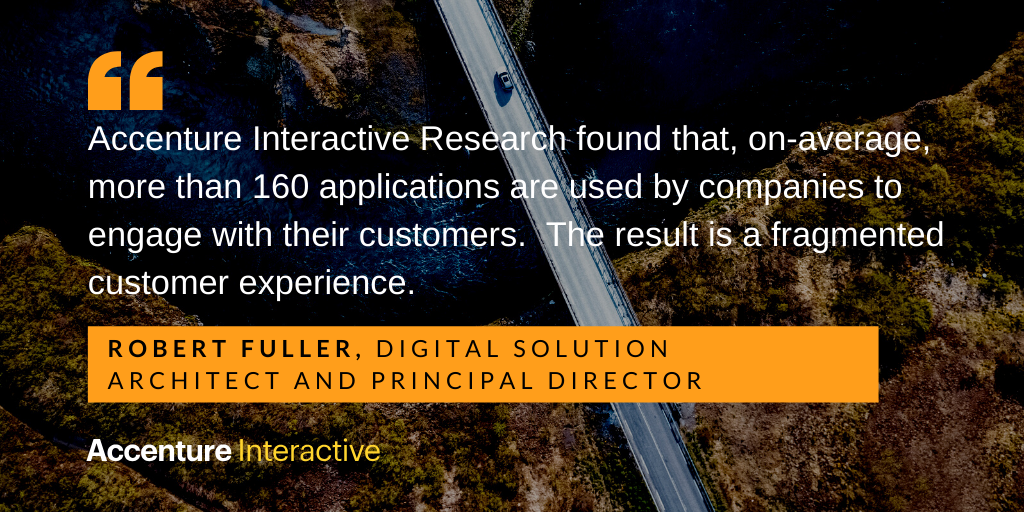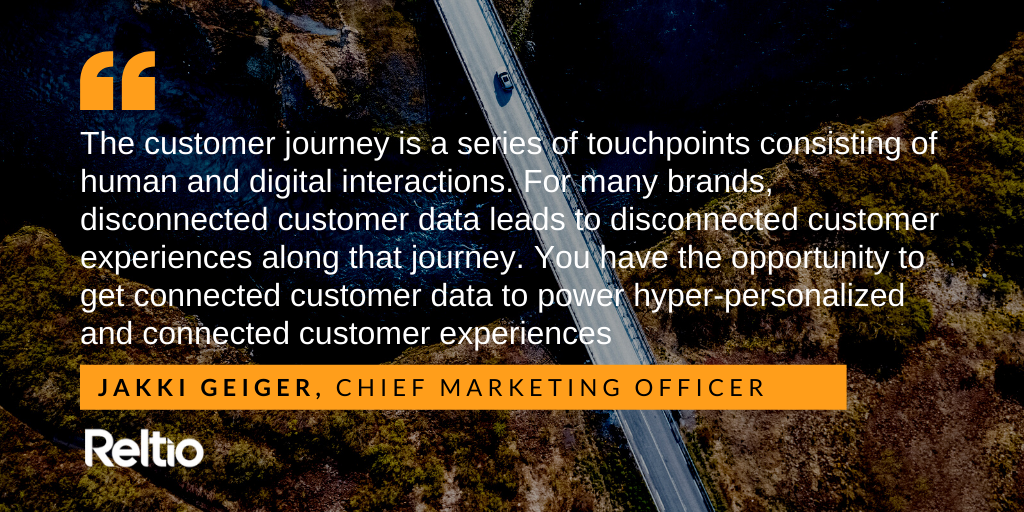4 Keys to Architecting The Connected Customer Experience

In the course of just a few weeks, virtually everything has changed, both personally and professionally, financially, and socially. For enterprise decision-makers, every day presents uncharted terrain that has to be navigated. In this new paradigm, connecting with today’s consumer is more critical than ever. Companies still have to compete to meet customer expectations and provide a seamless experience, but it’s about much more too. Connecting with customers truthfully, honestly and sincerely is more critical than ever.
In this three-part blog series, we’ll share advice on how you can shift to operating in real-time and at scale to meet the rapidly evolving needs of your prospects and customers. Part one explains the four keys to architecting connected customer experiences.
Disconnected Customer Data Leads to Disconnected Customer Experiences
As organizations navigate these turbulent times, establishing and building customer relationships is a vital imperative to building brand loyalty. Customers still expect fast, personalized experiences, but they are also looking to the companies they do business with to engage in a way that’s relevant to the consumer. Today, that means aligning communications and services to support those sheltering in place, including aligning products and services with what’s really required, addressing real-time inventory realities, and aligning messaging with delivery requirements. This also requires a more holistic view of customers, not only of their households but their communities, for example, to align with the reality that many are stepping up to care for others.

To address these evolving requirements, managing customer data is essential. The challenge is that this data is often siloed, disconnected, and inconsistent. Without connected data that helps you understand your customers better, you cannot deliver connected, relevant customer experiences that today’s realities require.
No matter your industry, one reality confronts your brand: You need to quickly shift your customer data strategy so you have the data you need to create a connected consumer experience.

The Evolving Role of Data in the Experience Economy
In the past decade, data volumes and the demand for data have grown exponentially. Businesses have experienced fundamental changes to the way data has been collected, managed, viewed and used. Let’s compare the evolving role of data to a car:
- Data as exhaust. Historically, many tended to think about data as the exhaust of a process. It was the output of apps and interactions. There are many examples of this, but a basic illustration would be the use of an online form that enables leads to register to attend an event or request access to a resource. Every website visitor interacts with the same form, submits their details and data is collected.
- Data as engine. Over time, data came to be viewed as part of a backend engine. In this scenario, data is combined with hard-wired programming logic to deliver interactions, content or functionality. For example, based on a search term submitted, a web page can feature basic customization.
- Data as a brain. Now, data needs to be the brain, functioning as the equivalent of an AI-powered, self-driving car. Rather than basic, programmed customization, data needs to power interactions and even business strategies and new business models.
4 Keys to Architecting Connected Customer Experiences
There are four keys to architecting a relevant, connected consumer experience. These steps will enable you to transition data from a backend by-product to the forefront, so it can drive the business and empower customers.

- Experience
Architect connected, personalized, and meaningful customer experiences using data insights collected from the beginning of each customer engagement. Focus the business on building the best customer journey you can deliver and ensure your data experts and analysts are closely involved early in the process. Only 13% of customers find that digital and physical interactions well aligned. Build data into the discussion and make it an integral part of the consumer journey, so that you can align with the remaining 87% of your customers. *[1] - Ecosystem
Accenture Interactive Research has found that, on average, more than 160 applications are used by companies to engage with their customers. The result is a fragmented digital experience for the customer. Most companies have technology ecosystems that are highly fragmented, with ownership shared across different departments. Data is not readily transferable between applications and functions. It’s vital to integrate relevant domains to establish a cohesive technology ecosystem. The technology ecosystem must be integrated to allow the seamless flow of data from disparate sources so that it can inform and unify the customer experience.
- Action (Engagement)
Build a consistent, complete view of your customers, so you can engage them with connected, hyper-personalized, and meaningful interactions. When you have the correct experience defined and the technology ecosystem integrated, you are ready to take your customer experience to a new level. By combining rich data and conversational AI, teams can enable smart, real-time response, and, moving forward, anticipate and predict needs and enable optimized, preemptive and proactive interactions. With these capabilities, data doesn’t just inform interactions, it informs business strategies, guiding the delivery of new services, channels and business models. - Learn
Use a continuous flow of information about your customers to adapt and evolve the experiences as they unfold. Analyze data to gain a deeper understanding of your customers. Use data to build the relationships customers expect, across all touchpoints. Harness data analytics to most effectively align each engagement with rapidly evolving requirements and realities, so you can boost services and strengthen customer loyalty and advocacy.

Connected Customer Data is the Key to Architecting the Connected Customer Experience
To contend with today’s dynamic business climate, you need to architect connected customer experiences. It is only with connected customer data that you can gain the real-time insights that power responsive and relevant experiences across all touchpoints that make up the customer journey.
What’s next?
Check out our 2nd blog in the series The Disconnected Customer Experience: Overcoming the 4 Biggest Obstacles to Connected Customer Experiences in Times of Uncertainty and Beyond. It may not surprise you that the biggest disconnect often starts at the C-Suite and trickles down through the entire organization.
Watch this 30-minute webinar with Robert Fuller, Customer Data Orchestration Practice Lead at Accenture Interactive and Jakki Geiger, CMO of Reltio.
You will learn:
- How to architect connected and hyper-personalized customer experiences at scale
- How to get executives aligned to deliver connected customer experiences
- How to overcome obstacles that stifle connected customer experiences
[1] Moments that Matter Most | Accenture’s Global Consumer Pulse Research (GCPR)


